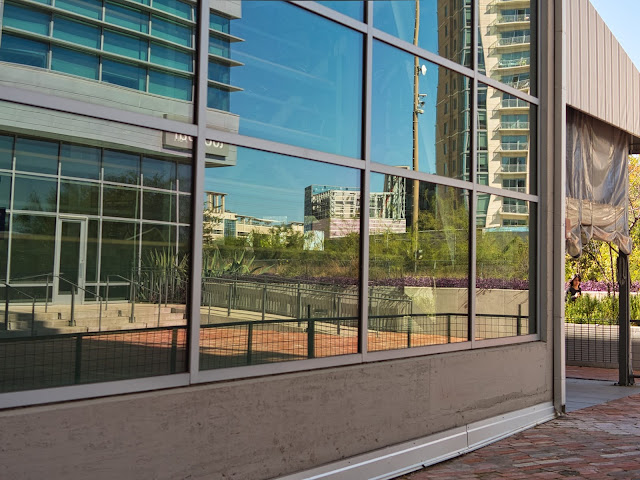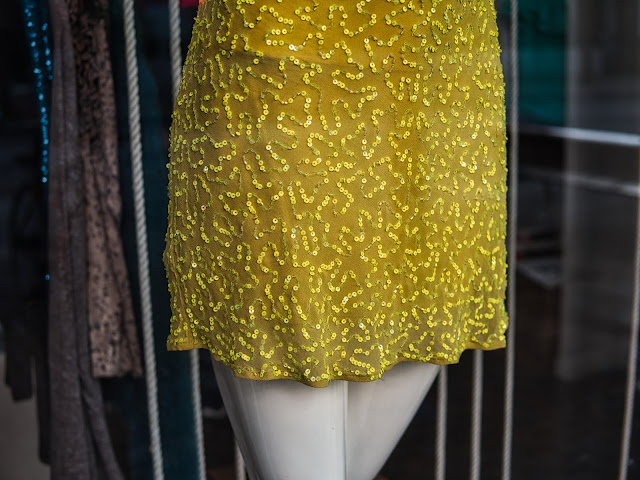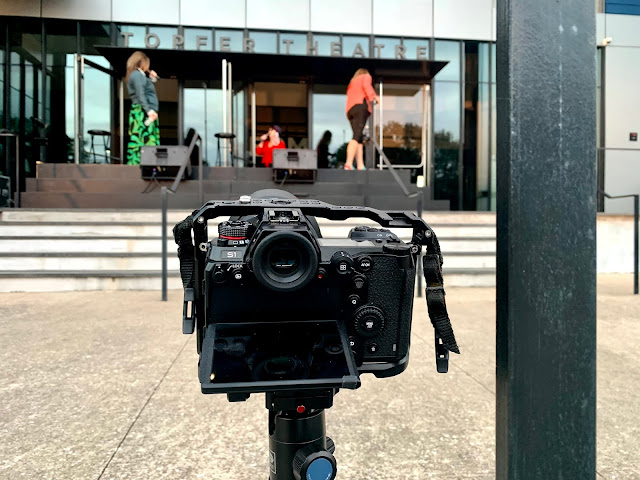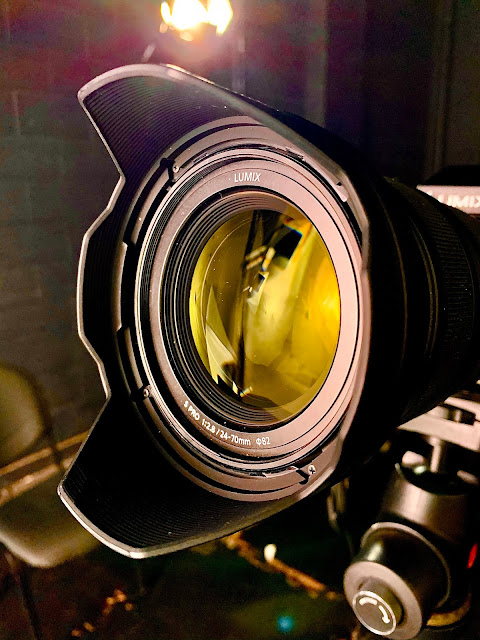The GH5S is such an eccentric camera but maybe that's the way cameras should be. I think it's misguided, both on the part of the makers and the users, to claim that every new camera is potentially a multi-capable, ultra-hybrid that is capable of super high resolution, incredibly low noise, gifted with a minute profile and yet also capable of tossing off the intense heat internally generated by enormous video files while also focusing with radar-quickness --- and all at an affordable price point.
My little(?) GH5S makes no claims for all around-ness, instead it just does a few things very well. It does those things excellently, if you consider the price. But it's not going to be your uncles do everything toolkit. Especially if your uncle acquires cameras by comparing everything on a specification spreadsheet.
Here are the things the GH5S does well: It makes very good 4K and 2K video files and does so with a wide range of file types and frame rates. It makes lovely, small raw files. About 10 Megapixels. But it's also the first Panasonic m4:3 camera to make those files with 14 bit raw files -- which is also lovely. The size of the camera, even with a battery grip mounted, is just perfect for my hands. The camera is solid but also not too heavy. It's rarely a burden. I guess if I put an enormously long lens on it I'd start to gripe a bit but then that's true with every system.
So, if you don't want or need to print really large and you like to make your own cinema it's a practical and very well constructed camera that won't break the bank and which will go a long way on a single battery charge.
Of course it has it's flaws. Or maybe limitations is a better way to speak about them... The camera doesn't have image stabilization. There are technical reasons for this but it is what it is. You can use stabilized lenses on it but if I use non-AF, non-stabilized lenses on it I'm either looking to shoot in good light (for photographs) or to use a tripod or a gimbal for video. No way around it. This is not a camera for photographers who want to brag about being able to handhold an exposure down to half a second. I only wish the people I want to make candid photos of would also hold still for half seconds at a time.
Some will also find the 10 megapixel size limit to be too far a reach for their style and I get that. It's why I never think of this particular camera as my "everything" "workhorse" camera. It's just not. But if you surrender to the idea that you are happy sharing your work electronically; on websites, sharing sites and blogs, you'll come to love the haptics of the camera and the pristine nature of its mature sensor tech.
If you are ready to vie with David Fincher for the title of "next great cinema master" you'll find that (excuse the hoary phrase...) this camera punches way above its cost and weight. The video files out of the GH5S are pretty sublime. If you get your exposures and color balance correct you'll be amazed at how rich and satisfying the files are. Add the DMW-XLR audio attachment and some thousand dollar microphones and you'll be equally amazed at how good the recorded sound can be. Even the V-Log is better than it should be.
I use the GH5S, currently, as a walkable notebook. I like the way the files look when I prep them for sharing on the blog and on Instagram. I like the way the video looks when I use the camera on a gimbal, a video monopod or a tripod. One thing that makes it all work for me is the way the menu echoes those found in all my other Panasonic cameras. And, one of my favorite Panasonic Lumix hardware consistencies is the position of the three buttons right next to the shutter button. The same on all six camera models I use most. The left button is for setting white balance, the middle button is for ISO and the right hand button is for setting exposure compensation. With those three buttons and the two setting dials I can do 95% of my shooting (in photography) without ever having to hit a menu.
While the GH5S is nobody's idea of a perfect solution to shooting everything in the universe it is a calm, happy and transparent camera that is a friendly companion with a well defined feature set. Add the Panasonic/Leica 12-60mm lens and you've got something really special. Just don't imagine that it will rival the resolution of a Sony A7RIV, the tracking AF performance of a Canon R5, or the low noise capabilities of the Lumix S1. You'll be disappointed if you do.
If you just want a friendly camera for nearly everything you'll want to share electronically then this one is very well sorted. At least for me.
The perfect m4:3 combo? A three pack. A GH5S for great video. A G9 for great photographs, and a GH5 for the perfect blend. Add very well designed Panasonic/Leica lenses for the win.
It was a beautiful day for walking yesterday, here in Austin. The sun was bright, the sky was clear and the temperature never crested 80°. I grabbed a taco from Torchy's on 2nd and a coffee from Starbuck's on 3rd street. The rest of the time I spent just looking at buildings and people and working with the 25mm Panasonic/Leica lens on my GH5S. Here's some of what I saw:



























